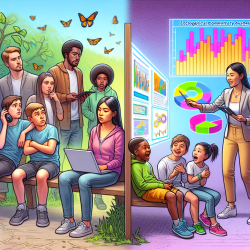Introduction
As a special education director, you are always on the lookout for innovative ways to enhance your practice and provide the best services to your students. Recent research titled "The case for investment in eye health: systematic review and economic modelling analysis" by Brad Wong et al. offers compelling evidence on the economic and social benefits of investing in eye health. This blog will explore how you can leverage these findings to improve your practice, encourage further research, and ultimately, enhance the educational outcomes for your students.
Why Eye Health Matters
Vision impairment affects over 2.2 billion people globally, yet eye health services remain underfunded and undervalued in global health policy. The World Health Organization estimates a significant funding gap to address preventable vision loss. The research by Wong et al. highlights the substantial economic benefits of investing in eye health, particularly in low- and middle-income countries. The study found that eye health investments provide a median benefit-cost ratio of 36, significantly higher than the typical global development investment ratio of 6.
Key Findings from the Research
- The research identified 21 studies from 10 countries, highlighting the impacts of refractive error correction for school students and the economic benefits of cataract surgeries.
- The median benefit-cost ratio for eye health investments was found to be 36, with school eye screenings showing a ratio as high as 42.
- Eye health interventions offer broader welfare gains, including productivity improvements, income increases, and enhanced academic performance.
Implementing Research Outcomes in Your Practice
As a practitioner, you can harness the findings of this research to improve your practice in several ways:
- Advocate for Eye Health Initiatives: Use the evidence from this research to advocate for increased funding and support for eye health initiatives within your school district. Highlight the economic benefits and the potential for improved educational outcomes.
- Integrate Vision Screenings: Implement regular vision screenings for students to identify those with refractive errors or other vision impairments. Early detection and correction can significantly enhance students' learning experiences and academic performance.
- Collaborate with Eye Health Professionals: Partner with eye health professionals and organizations like TinyEYE to provide online therapy services and support for students with vision impairments.
- Encourage Further Research: Support and participate in further research to explore the broader impacts of eye health interventions in educational settings.
Encouraging Further Research
While the findings of this research are promising, there is still much to learn about the full potential of eye health investments. Encourage further research in the following areas:
- Impact on Different Sectors: Investigate how visual impairment affects various sectors, such as agriculture, manufacturing, and domestic work, across different low- and middle-income countries.
- Broader Impact of Vision Correction: Conduct studies using randomized controlled trials or quasi-experimental methods to understand the broader impact of vision correction on productivity and learning.
- Cost Estimations: Focus on comprehensive cost estimations for eye health interventions, including case-finding and patient expenditures.
To read the original research paper, please follow this link: The case for investment in eye health: systematic review and economic modelling analysis.










